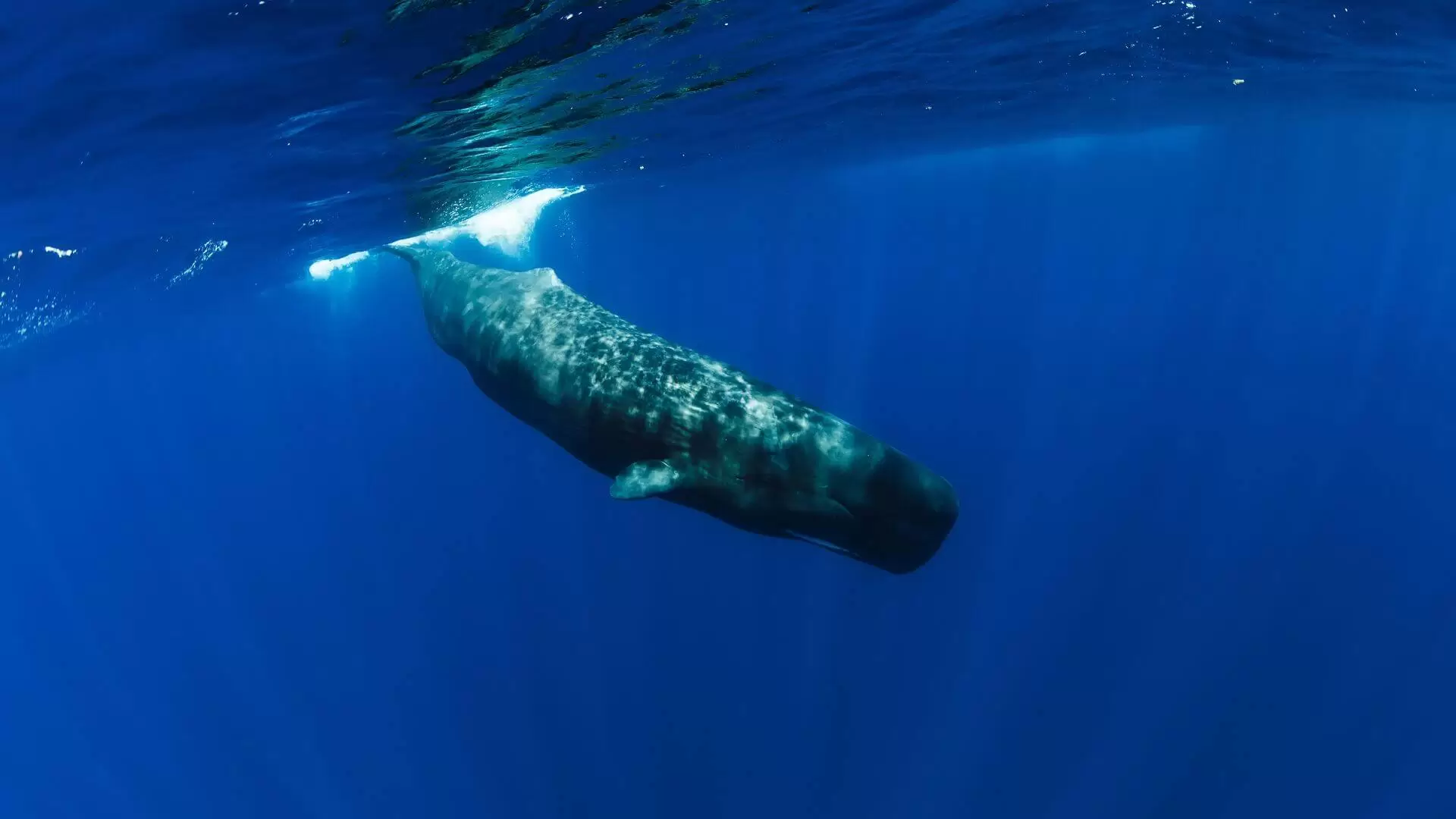It is a kind of ‘Morse code’ whose sounds differ in rhythm and time
Sperm whales ( Physeter macrocephalus ) are truly unique and mysterious mammals, they have the largest nose and brain in the animal world – five times heavier than that of the human being – and the largest teeth of all mammals.
They belong to the family of the odontocetes or toothed whales, being easily recognizable by their enormous head and prominent, rounded forehead.
They have a large amount of a substance known as ‘spermaceti’ on their heads, which whalers once believed to be an oily sperm fluid.
It is currently thought that this kind of white wax helps the mammal to modify its buoyancy, allowing it to dive in search of squid.
And it is that the sperm whales are capable of diving up to 1,500 meters deep in search of food, they do so by holding their breath for up to ninety minutes, which makes them the kings of freediving.
It has been found that at body temperature the ‘spermaceti’ is in a liquid state and is less dense, but at lower temperatures, it solidifies and increases in density. With immersion at great depths, the blood flow decreases, and the ‘spermaceti’ solidifies a situation that is reversed when the sperm whale returns to the surface.
Its chemical composition is basically triacylglycerol, free alcohols, and fatty esters (cetyl palmitate), which is why it was used for a long time in the manufacture of candles, soaps, lipsticks, cosmetics, and oil for industrial use.
The codas, the dialect of the sperm whales
Perhaps the most curious aspect of these oceanic giants is that they are capable of emitting a sound, a click with which they can communicate, and that they expel in a spaced way, both in rhythm and in time, as if it were a Morse code.
Keep in mind that, in the deep dark ocean, where they cannot rely on vision, they have to look for alternatives to identify themselves and warn of the presence of possible dangers. Through clicks –called codas– they can communicate with their congeners.
When the codas of sperm whales living in different latitudes are compared, it is observed that the acoustic repertoires sound different, that is, they have different dialects, which is truly fascinating. It would be something similar to the phonetic differences that exist between a Canadian, an American, and an Australian.
With these sound emissions, the sperm whales are able to create social networks for each clan. Furthermore, researchers are convinced that they are not innate but must be learned.
On the other hand, scientists have discovered that one of the codas –which they have baptized as the ‘regular five’, due to its five consecutive clicks– is one of the few that practically all groups of sperm whales know, it would be something like an expression common to all regional dialects.
Very probably the scriptwriters of the movie ‘Finding Nemo’ were aware of all this acoustic research and that is why they gave the little blue fish called Dori the ability to speak in ‘whale’, a sound that he achieved by modulating his voice.

